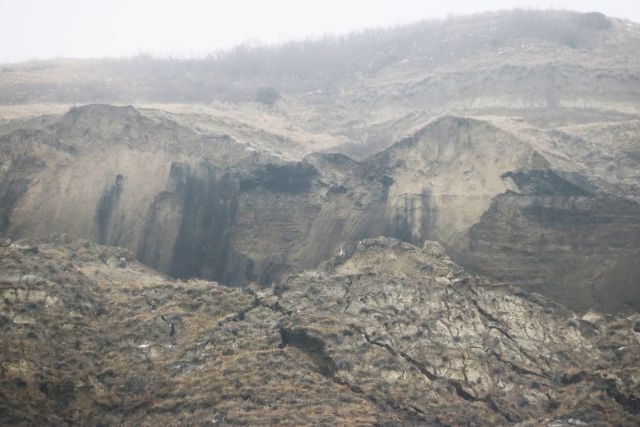
The dynamic nature of the valley’s landscape was on full display last week as a major slide near Nacmine caught the attention of readers.
Long time resident Fred Orosz noticed the slide on the south side of Highway 575 on the way to Nacmine, just beyond the Commander Mine site. A large portion of the hill had separated and slid. He brought it to the attention of The Mail.
He also pointed out the slide to David Eberth, research scientist in sedimentary geology and palaeoecology research at the Royal Tyrrell Museum. Eberth tells The Mail these appear to be becoming more numerous recently.
“This is a pattern we have seen that has become more wide spread as we have seen overall more moisture over the last few years. That is what is to be expected. That is what this landscape does,” he said.
As part of his profession, he finds himself keeping an eye on different sites where slides appear to be happening. One of interest is near the Morrin Bridge, where it has actually covered the road on a couple occasions. Another, he and other researchers are keeping an eye on, is near a road close to the Little Church.
“We’ve had so much moisture last year and the year before in the spring, it just makes this stuff move,” he said.
He adds that recent warm weather contributes to slides. “When you are getting freezing and thawing, it is the perfect combination to create these glide plains in the shallow subsurface, so you are getting these slumps everywhere,” he said.
There is potential for these kinds of slumps, especially near property, that could be of concern.
“This is a ongoing problem and a real headache for the highways people, and I have nothing but respect for their efforts to deal with it,” he said.
For researchers, this may give the opportunity to expose items of interest.
“That has always been the gateway for us. The flood mitigation money the province made available to a variety of institutions, including ours, we were able to find a variety of new specimens the last couple years,” he said.